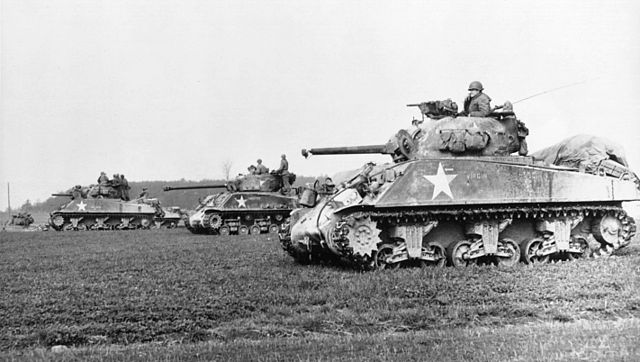The T-34 is a Soviet medium tank from World War II. When introduced, its 76.2 mm (3 in) tank gun was more powerful than many of its contemporaries, and its 60-degree sloped armour provided good protection against anti-tank weapons. The T-34 had a profound effect on the conflict on the Eastern Front, and had a long-lasting impact on tank design. The tank was praised by multiple German generals when encountered during Operation Barbarossa, although its armour and armament were surpassed later in the war. Its main strength was its cost and production time, meaning that German panzer forces would often fight against Soviet tank forces several times their size. The T-34 is also a critical part of the mechanized divisions that form the backbone of the Deep Battle Strategy.
T-34-85 medium tank
BT-7, A-20, T-34 (model 1940), and T-34 (model 1941)
Medium tank A-32
Pre-production prototype A-34 with a complex single-piece hull front.
A medium tank is a classification of tanks, particularly prevalent during World War II, which represented a compromise between the mobility oriented light tanks and the armour and armament oriented heavy tanks. A medium tank's classification is not actually based on weight, but off of tactical usage and intended purpose; for instance the German Panzerkampfwagen V Panther medium tank has a mass similar to contemporary Allied heavy tanks. The most widely produced, cost effective and successful tanks of World War II were all medium tank designs. Many of the medium tank lines became what are called main battle tanks in most countries.
A Soviet T-34-85 medium tank
The German Panzer IV medium tank proved to be an adaptable design which was progressively upgraded during the Second World War with extra armour and better guns fitted
Sherman medium tank from World War II, the workhorse of U.S. armoured forces
American M46 Patton medium tank in the Korean War.








